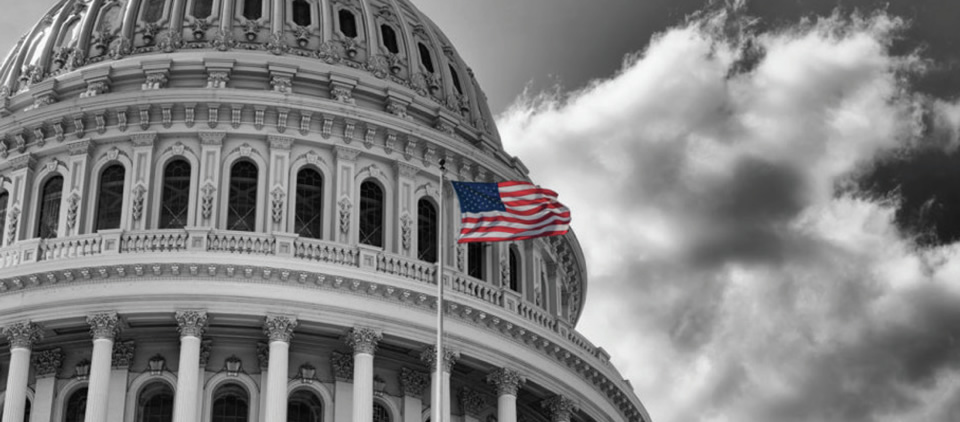On November 21, 2019, the United States Department of Homeland Security (DHS) began enforcing several regulations intended to modernize the EB-5 immigrant investor visa program. Although they were first announced in July, giving stakeholders 120 days to plan accordingly, it remains to be seen exactly how markets will respond now that these rules are official.

We recently sat down with Civitas co-founder and Managing Director Rafael Anchia to survey this new EB-5 landscape. Looking to 2020 and beyond, Rafael acknowledges that there are uncertainties to be navigated. However, he also says that immigrant investors should continue to view EB-5 opportunities primarily through the lens of risk-reward—but know that the focal points (foreground, middleground, and background) have shifted.
The following conversation has been condensed and lightly edited for clarity.
Exactly what changed with the EB-5 immigrant visa program on November 21, 2019?
Several things, with the increase in principal investment required to apply for EB-5 receiving the most attention. Targeted Employment Area (TEA) investments, previously the easiest point of entry for those seeking EB-5 visas, has risen from $500,000 to $900,000. The non-TEA investment minimum has jumped by about the same percentage, from $900,000 to $1.8 million. The increase has been even more steep for projects that have lost their TEA status under the new rules, with minimums effectively quadrupling (from $500K to $2M).
According to DHS, this raising of minimum investment amounts was necessary to account for inflation. What many have failed to note is that all future adjustments will be tied to measures of inflation and will be implemented every 5 years.
The other major change is at the policy level. To curb abuses associated with gerrymandering, individual state governments can no longer establish TEAs. That authority now rests exclusively with the federal government.
Finally, the new rules also require that those permanent residents who U.S. Citizenship and Immigration Services (USCIS) describes as “derivative family members” can only petition to remove conditions on their permanent residence—for example, if they obtained their Green Card via marriage to an EB-5 investor—by filing independently.

How significant are these changes? What might their immediate effect on EB-5 be?
They are significant, but they aren’t necessarily the sea change they may appear to be. In several ways, they represent a somewhat overdue correction with respect to actual conditions on the ground.
For example, the minimum investment amounts had not been adjusted since 1990, the same year that Congress created the EB-5 program, and Civitas has been calling for reform measures for years. Meanwhile, we’ve been tracking regional center consolidation since at least Q4 2018. DHS’s new regulations will only fuel this trend. Again, many pre-November 21 EB-5 TEA projects will no longer qualify for that status, meaning more of these projects will be at elevated risk of failing to reach their funding goals. The net result will be contraction of EB-5-exclusive investments, not to mention a winnowing of EB-5-exclusive providers.
Likewise, several leading EB-5 markets have been in retrogression since at least Q1 2019. For a variety of reasons, immigrant investor programs sponsored by both Canada and Australia have become more attractive to Chinese nationals. Those individuals have traditionally accounted for approximately half of all EB-5 investment.
In closing, what do you feel is at real risk of being missed in analyses of these changes to the EB-5 program?
First, that these rule changes are, overall, a positive for immigrant investors. Admittedly, some will be priced out of traditional EB-5 opportunities. The flip side is that these new constraints will force investment firms like Civitas to be more creative and more culturally competent in order to serve a new class of EB-5 investors.
Secondly, several important aspects of the EB-5 program have not changed. Foreign direct investment is still vital to creating American jobs. Those who are in this business for the long haul—and the right reasons—are not going to abandon EB-5. As such, those investment firms who are truly committed to helping their clients live the American dream will likely take a larger share of the market and exert an even greater (and arguably more positive) influence on the policies guiding EB-5.
Finally, DHS’s updated rules are probably only the first wave of changes to break. In fact, Senators Lindsay Graham, Mike Rounds, and John Cornyn have acted somewhat pre-emptively, introducing the “Immigrant Investor Program Relief Act” on November 5, 2019. Should this bill become law, it will, among other things:
- Further redefine TEAs, making urban TEAs essentially synonymous with Opportunity Zones (as defined by the 2017 Tax Cuts and Jobs Act);
- Lower the non-TEA minimum investment amount to $1.1M;
- Pair protocols for relieving the current EB-5 applicant backlog with instruments to open up new revenue streams for the program;
- Bolster the program’s fraud prevention and security provisions.
Multiple forces originating both within and outside the United States have shaped EB-5 since the program’s founding, and its evolution is not reliant on any single constituent or set of circumstances. Nevertheless, bold leadership, whether demonstrated by elected officials, brokers, or individual investors, can and does make a difference.
About Civitas Capital Group
Civitas Capital Group is a global alternative investment manager with $1.7B AUM. Civitas offers compelling, niche opportunities in U.S. real estate, lodging, and alternative credit designed to create opportunities that enrich communities, investors, and employees alike. Driven by relentless creativity, Civitas digs deeper to uncover opportunities that others miss. Civitas was founded in 2009 by Daniel J. Healy and Rafael Anchia and is proudly based in Dallas, Texas.
About the EB-5 Program
The U.S. government’s EB-5 Immigrant Investor Program allows foreign nationals to obtain U.S. permanent residency for themselves and their immediate family members by investing in American businesses that create at least 10 new American jobs.
